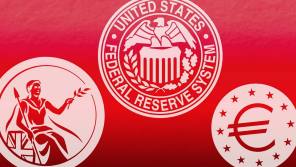

Before 2005, this could lead to many scheme members losing most of the pension entitlements they had built up. The Pension Protection Fund was set up in April of that year to ensure that compensation was available to members in such situations.
Qualifying DB schemes enter the PPF if they do not have sufficient assets to cover the cost of providing PPF compensation. The process is initiated once the sponsoring employer fails and the administrator has filed the insolvency notice.
Two possible options are available to DB schemes.
The first is where the scheme is comparatively well-funded.
These schemes would transfer the liabilities to an insurer. Assuming a normal and successful buyout process, this means that members receive benefits that are higher than the PPF compensation.
If, however, there is not sufficient funding available, the scheme will enter the PPF.
In the case of larger well-funded schemes, there may not be adequate capacity in the buyout market to cover the benefits. Such schemes can apply to the PPF to continue to operate as a closed scheme, although this is a rare occurrence.
If a scheme is either extremely well or poorly funded and the outcome therefore obvious, the process is fast-tracked and simplified, allowing it either to go to market to seek a buyout sooner, or go into the PPF.
For those that fall somewhere in the middle, a full valuation ensues to establish whether the scheme will enter the PPF.
This requires a full data cleanse exercise, and though the time scale for this varies on a case-by-case basis, it can be a lengthy process that can take up to two years (or longer in some cases).
While the scheme is in the assessment period, members cannot transfer out, though those that were in process before assessment are honoured.
If the scheme is bought out or runs as a closed scheme, members can then transfer out (dependent on the terms of the policy secured with the insurer). If the scheme enters the PPF then members will not be able to transfer out.
Members who retire or die during this time are impacted in that their scheme benefits are paid at the lower of the scheme benefits or the PPF level of benefits. For outside buyouts, benefits are topped up to reflect the benefits secured.
PPF benefits differ from scheme benefits, and depend on members’ ages. Those over the scheme’s normal pension age will receive full payment, although when in payment there will be no increase on pre-97 pensions, and post-97 pensions increase in line with inflation up to 2.5 per cent a year.
For members under normal pension age, compensation is capped (currently around £40,000 a year at age 65). Members with more than 20 years’ service in their scheme get a higher cap. The level of compensation is then also reduced by 10 per cent.
In terms of member engagement, the trustees remain responsible for member communications until the scheme enters the PPF or buys out with an insurer, but the PPF may also become involved.
During the assessment period, the PPF performs an analysis of the scheme’s investment strategy and level of risk. If deemed necessary, it has the power to intervene to make changes to the assets held.
In short, since its inception, the PPF has acted as a safeguard for DB schemes when their sponsoring employers fail.
Where once such an event would inevitably result in compromised outcomes, particularly for members who had not yet retired, adequate processes are now in place to protect members and provide them with an income in retirement.
Joanne Shepard is a director at Willis Towers Watson



